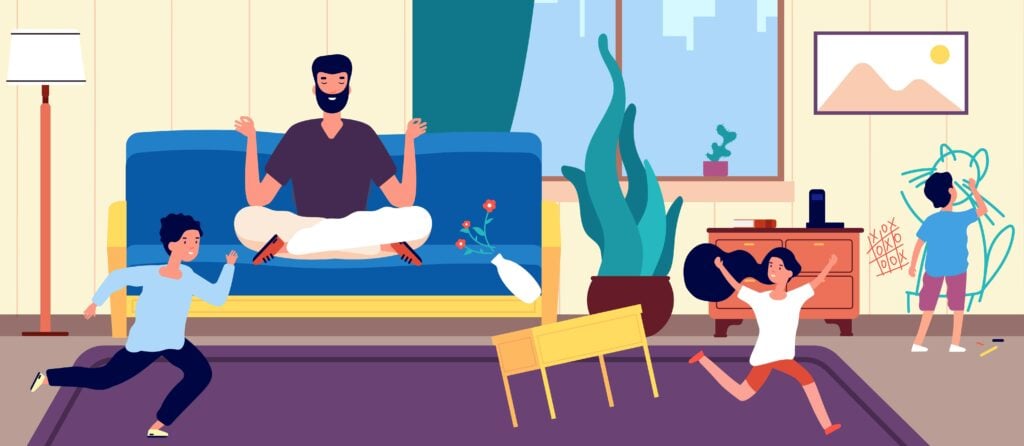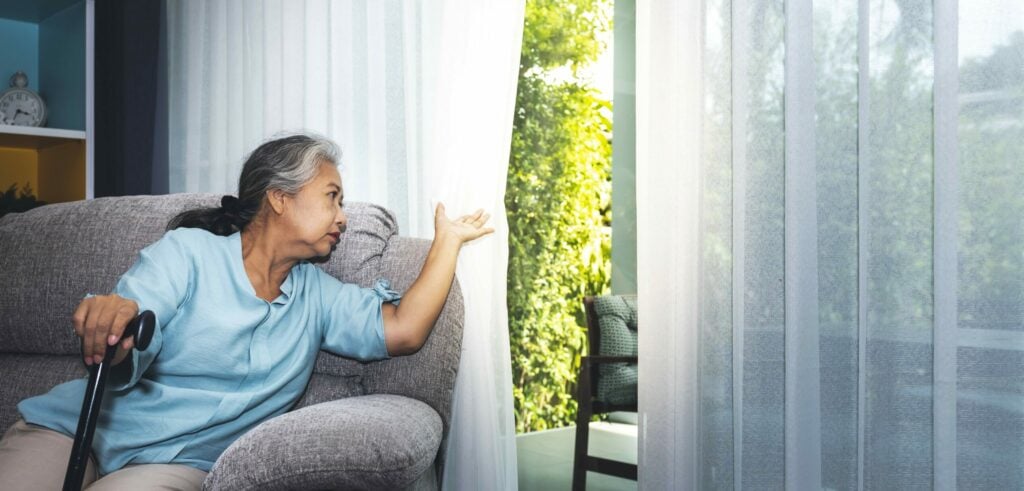10 tips for managing travel anxiety
Reviewed by Stephanie Steinman, PhD, CSAC


Travel used to be celebrated for creating happy and meaningful experiences, but the value of tourism has taken a big hit in recent years. The COVID-19 pandemic replaced much of the joy of traveling with anxiety and stress.1 It also led to a rise in tourist discrimination, with Asian travelers in particular facing poor treatment due to a combination of racism and fear.2


For many people, travel is incredibly stressful—especially now. But using a few techniques to manage anxiety can help make your journey more relaxing and much more fun.
What causes travel anxiety?
Traveling comes with a lot of unknowns. The logistics of trying to make it from point A to point B without spending too much, getting lost, or otherwise having a bad time can be enough to keep some people from booking a trip altogether.
In addition to concerns about personal health and safety, other causes of travel anxiety include:
- Being away from home and loved ones
- Dealing with transportation
- Managing stress for kids or pets
- Facing language barriers
- Creating itineraries and following schedules
- Negotiating large crowds, long lines, and unexpected delays
- Absorbing high costs
- Getting around in bad weather
- Coping with exhaustion
- Having had negative travel experiences in the past
Signs to watch for
We all experience anxiety in different ways. Some people might feel uneasy or restless, while others have panic attacks or serious physical symptoms. Common signs of anxiety before or during a trip include:
- Excessive worry or fear
- Difficulty concentrating
- Procrastination
- Irritability or frustration
- Insomnia
- Negative thoughts
- Palpitations or a racing heart
- Shallow or rapid breathing
- Muscle tension
- Headaches
- Digestive issues
- Fatigue
How to deal with travel anxiety
Having anxiety around travel doesn’t mean you’re destined for a miserable trip. The following guidelines can help you enjoy your time away.
1. Check in with yourself regularly
The first step in managing anxiety is to recognize it and accept that it’s a natural reaction to stress. Start by taking a few deep breaths and asking yourself how you’re feeling physically and emotionally. The more aware you are of your anxiety, the better position you’ll be in to manage it and prevent it from spiraling.
2. Work on changing how you think about travel
Anxiety often stems from distorted beliefs about the dangers of certain situations, or from emotions that are challenging to process. During anxious moments, try to identify your thoughts and feelings. Then try one of these strategies:
Redirect your attention. When you catch yourself focusing on potential disasters, shift your mental energy to an experience you’re looking forward to, like a special meal or a tourist attraction. This conscious effort can help you create a more balanced perspective.
Challenge your beliefs. When you find yourself drawing conclusions based on how you feel, take a step back and evaluate the situation. Is what you’re feeling rational or exaggerated? What evidence do you have for it? Asking these questions will help you differentiate between your emotions and reality, which can help you make better decisions about your travel plans. This strategy comes from cognitive behavioral therapy (CBT), a treatment approach that helps you replace unhelpful thoughts with more realistic ones.
Embrace a gratitude mindset. Our minds tend to dwell in the negative, so we have to train them to shift toward gratitude. Remember why you’re traveling in the first place: Maybe you’re going to a new place or reconnecting with a friend. You can also work on giving yourself grace. Travel can be hard, and changes can be frustrating. Acknowledge those challenges and be compassionate with yourself if you start to feel upset.
3. Identify your triggers and plan ahead for them
Interacting with other people and feeling judged can be major sources of travel anxiety, especially for people with conditions like anxiety or depression.3 You might worry about everyday conversations like asking for directions, buying a train ticket, or ordering a meal.
Here are some strategies you can use to help reduce or manage these triggers:
- Make a list of the challenging experiences you’re worried about having.
- For each item, brainstorm ways to handle the situation in a calm way. For example, if you’re anxious about interacting in a new language, consider practicing some simple phrases at least a week before you arrive (“please,” “thank you,” “excuse me,” and “where is the restroom?” always come in handy).
- Prepare for uncertainty by picking up a phrasebook or downloading a translation app, having maps and routes ready, and looking up places whose staff may speak your language.
4. Get organized
Planning for your trip can help you feel more prepared and less overwhelmed:
- Make a packing list to ensure you bring what you need.
- Book accommodations and transportation ahead of time.
- Research costs for activities, restaurants, and attractions to help you plan a budget and reduce financial anxiety.
- Take care of important tasks before your trip, such as paying bills and notifying banks of your travel plans.
- Keep important documents, like passports and travel insurance information, in a safe place that’s easily accessible.
- Allow yourself advance time to prepare so you don’t feel rushed.
Apps like Wanderlog and TripIt can help you organize your itinerary, including flights, accommodations, and activities, all in one place. In addition to saving time and mental effort, this type of tool lets you keep everything in order.
5. Create a realistic schedule
When you’re thinking about your itinerary, consider your own limitations and preferences. To help reduce stress, try the following:
Take care of arrival and departure logistics. Plan ahead for your transportation, and give yourself enough time for potential delays. You can also try to build in enough rest time to recover from long travel days or jet lag.
Stay flexible. Leave room for spontaneous activities or schedule changes. You might also consider backup options, in case planned activities don’t work out.
Prioritize self-care. Although you may feel pressure to do as much as possible and fill up your schedule, it’s good to include downtime and relaxing activities—anything from a short walk to a full day of rest and recovery. This is especially important if you’re traveling with young kids. Sometimes an afternoon of movies and PB&Js in your hotel room can be just what everyone needs to recharge for the next day’s adventures.
6. Choose your travel mode thoughtfully
To minimize stress, try to stick to modes of travel you’re comfortable with. Consider factors like legroom, seating comfort, and other amenities.
If you can’t avoid a mode of transit that makes you anxious, try to identify your triggers in advance and plan out healthy ways to cope. For instance, people who have flight anxiety tend to fear turbulence, unknown sounds, and the potential for terror attacks.4 Instead of turning to alcohol, sedatives, or tranquilizers, try healthier strategies like deep breathing, visualization techniques, or calming music.
7. Pack comforting items
Distracting yourself from negative feelings can sometimes be enough to help anxiety. Consider packing items like your favorite book, healthy snacks, travel games, or a journal. You may also want to preload your favorite shows, podcasts, and playlists onto your device of choice.
8. Spend some time in nature
If you’re traveling for work or planning to visit a big city, consider incorporating nature into your trip by visiting local parks, going on a hike, or spending time at the beach. Connecting with the natural world can help relieve anxiety and have restorative health effects.5 You can also look for lodging near a natural setting like a lake or a public garden.
9. Make mindfulness a habit
Mindfulness practices can help reduce symptoms of anxiety and panic, even in people with anxiety disorders.6 To practice mindfulness, focus your attention nonjudgmentally on something in the present moment, such as your breath, your thoughts, or one of your senses. Consider what you’re feeling in the present moment, and allow your thoughts and emotions to be present without judging them. If you like, you can use a guided meditation app with a pair of headphones.
10. Ask for help as needed
If travel anxiety is causing significant distress or interfering with your ability to take a trip, consider getting help from a mental health professional. Travel phobia, a more severe form of travel anxiety, can be treated with trauma-focused cognitive behavioral therapy (TF-CBT) or eye movement desensitization and reprocessing (EMDR).7
Other phobias tied closely to travel include:
- Hodophobia, a heightened and persistent fear or anxiety about traveling
- Aerophobia, extreme fear of flying
- Thalassophobia, a fear of deep water
- Agoraphobia, a fear of leaving safe places, especially home
If you think you may have travel phobia or a related phobia, or if you’re concerned about anxiety in general, visit our directory to find a therapist near you. A mental health professional can help you manage your symptoms and get back out in the world again.

Sources
1 https://www.ncbi.nlm.nih.gov/pmc/articles/PMC8542819/
2 https://www.thelancet.com/journals/laninf/article/PIIS1473-3099(23)00052-X/fulltext
3 https://www.sciencedirect.com/science/article/abs/pii/S2214140521001730/
4 https://pubmed.ncbi.nlm.nih.gov/30922426/
5 https://pubmed.ncbi.nlm.nih.gov/36749782/
6 https://ajp.psychiatryonline.org/doi/abs/10.1176/ajp.149.7.936/
7 https://onlinelibrary.wiley.com/doi/10.1002/cpp.680
About the author
Elise Burley is a member of the therapist.com editorial team. She has more than a decade of professional experience writing and editing on a variety of health topics, including for several health-related e-commerce businesses, media publications, and licensed professionals. When she’s not working, she’s usually practicing yoga or off the grid somewhere on her latest canoe camping adventure.
Related articles

Chronic pain and mental health
Chronic pain and mental health share a complex relationship, but those who...

Self-regulation techniques for adults and kids
Self-regulation is the ability to observe, manage, and adapt our emotions and...

Transcranial magnetic stimulation (TMS): Uses and risks
Transcranial magnetic stimulation (TMS) therapy is an effective, relatively...

